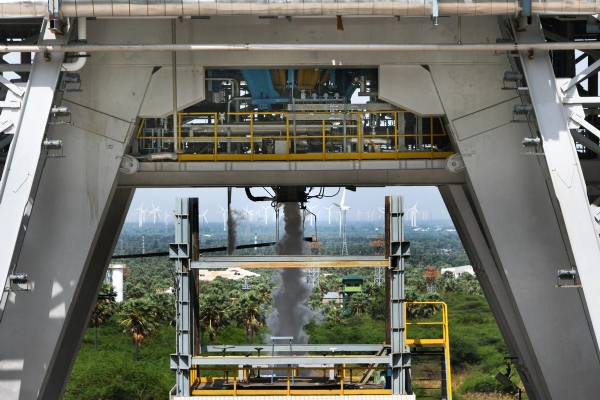ISRO successfully completes maiden test of Semi-cryo engine Power Head
Once ready, this 2000kN engine and its stage(associated components, fuel tanks etc.) will be replacing the current L110(core stage) of India"s largest rocket - Launch Vehicle Mark 3(LVM3). This is meant to significantly add to the lifting power of the LVM3 rocket.
Total Views | 12
The Indian Space Research Organisation (ISRO) has initiated the series of tests required for qualifying and validating its most-powerful liquid-fuelled engine yet, one that is powered by special refined kerosene (dubbed as 'ISROsene') and super-cooled liquid oxygen.

Once ready, this 2000kN engine and its stage(associated components, fuel tanks etc.) will be replacing the current L110(core stage) of India's largest rocket - Launch Vehicle Mark 3(LVM3). This is meant to significantly add to the lifting power of the LVM3 rocket.
As per the procedure followed in such cases, ISRO carried out tests on the Pressure Head Test Article(PHTA), a setup that comprises all engine systems except the thrust chamber. "The test is the first of a series of tests planned to validate the design of the propellant feed system, including the low-pressure and high-pressure turbo-pumps, the gas generator, and control components," ISRO said. In a major success for ISRO, this initial test is said to be a grand success and paves the way for up to seven or eight tests, which will also include the test firing of the new engine.
The turbo pump (a component used to pump fuel or oxidizer to the thrust chamber) used in the Semi-cryogenic engine is of 36Megawatt power, which is more than seven times higher than the turbopump used on ISRO's legacy Vikas engine that uses a 5Megawatt turbopump.
ISRO's Liquid Propulsion Systems Centre (LPSC), Valimala, Thiruvananthapuram, has undertaken the design and development of this Semi-cryogenic engine and has also roped in Indian industry to take part in the efforts.
The test was carried out at the newly-established test facility at IPRC, Mahendragiri, which is capable of testing semi-cryogenic engines up to 2600 kN thrust and will support the subsequent testing and qualification of the fully integrated Semi-cryogenic engine and stage. This test has demonstrated the successful performance of the test facility and power head test article in the maiden attempt itself.
.
.
Bharati Web







